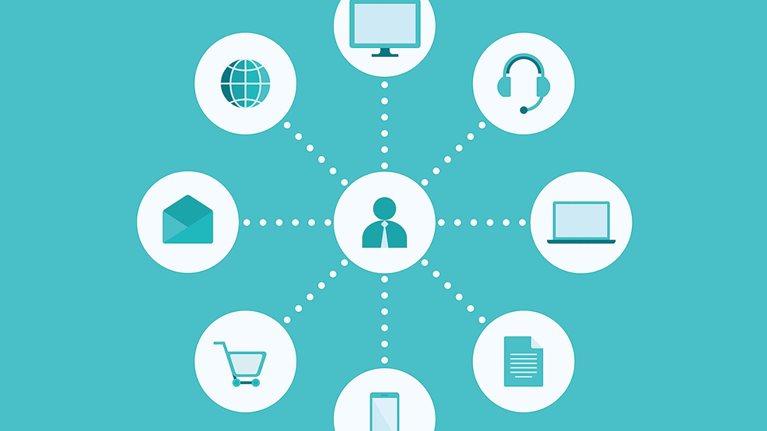Consumer expectations are rising across the board—not due to a specific industry but from all of the excellent interactions that leading companies provide. Executives have recognized that customer satisfaction is the key indicator in gauging success, but too often a focus on specific touchpoints or channels results in incremental progress that only allows a company to keep pace with the changing customer landscape. Leading executives have recognized that really moving the needle on customer satisfaction requires a more ambitious effort—a transformation of the entire customer experience.
Stay current on your favorite topics
Gaining a comprehensive view of the customer journey is easier said than done, and initiatives that attempt to adopt a customer-centric mind-set can fall short without both a clear top-line strategy and a granular view of customer behavior. Even as technology and data from engagement channels provide companies with increased visibility into customer touchpoints, weaving all of this information together into a clear and coherent picture of the customer can be a formidable challenge. The complexity of customer interactions in multiple channels, for example, means that information resides throughout the enterprise—in not only customer care but also marketing, sales, product development, and back-office functions.
Designing excellent customer journeys—an orchestrated sequence of touchpoints that customers traverse to address common requests and issues, often in a mix of live and digital channels—is critical to a customer-experience transformation. This process of mapping customer journeys is the only way to truly get a comprehensive view of the entire gamut of touchpoints and how they fit together. Customer care, which typically includes the call center as well as online and self-service channels, has an integral role to play. As the natural owner of a large part of the customer journey, customer care can provide invaluable insight by helping to define journeys, identify pain points, and spur collaboration across functions. Such actions can produce additional benefits: an end-to-end redesign of the customer journey can not only transform the customer experience but also reduce operating costs in customer care.
Why the customer journey matters in a customer-experience transformation
Traditionally, efforts to enhance customer experience have focused on gathering a tremendous amount of detail about individual touchpoints—identifying the key moments that have an outsize impact on customer satisfaction, determining why care fell short, and developing remedies to improve service. Leaders of different functions such as sales, marketing, and customer care would devote significant time and resources to optimizing interactions within the channels they managed—but a lack of visibility across functions hindered more sweeping, lasting progress.
Would you like to learn more about our Operations Practice?
Organizations that can break out of this siloed mentality have the potential to gain an unprecedented view of the customer. The digitization of the entire customer journey, including the use of digital channels and self-service tools, is well under way. And leading organizations are using increasing volumes of data to link the customer journey and customer satisfaction to overall strategy and top-line metrics on growth and operational performance (Exhibit 1). By understanding how operational factors such as speed and first-call resolution translate into customer satisfaction, contact centers can ensure they focus their energy and resources on areas that have the greatest impact on the customer experience. When these efforts are aligned with the organization’s overall goals, this enhanced experience contributes to a higher recommendation rate—a core metric for the company.

Customer care’s vital role in the transformation
For more and more organizations, customer care is playing an essential and natural role in mapping the customer journey, but to do so the function must often overcome several barriers. The function began as the call center, which was responsible for just one touchpoint and largely transactional. In an omnichannel world, customer care is increasingly becoming a major contributor to customer satisfaction across a broad range of customer channels, from chat and social media to service apps and self-service channels. In some organizations the function is still perceived as executional rather than strategic, focused primarily on handling low-value requests. In addition, the proliferation of channels and touchpoints over the years has increased the number of entities within the enterprise that engage with customers. So while customer care remained at the center of customer experience, functions such as sales and marketing were viewed as having a better understanding of customers. Last, obstacles to information sharing and collaboration sometimes muted customer care’s influence on shaping customer-experience strategies. In less-advanced organizations, for example, even basic tasks such as making changes to the website hosted in the marketing department can prove a challenge.
The truth is that customer care should be closely involved in designing customer journeys: the function encompasses all touchpoints and organizational units with a clear service component, such as branches, field service, and contact centers that handle calls, emails, chats, and back-office tasks. The organizational setup of customer care reflects this reach. Many organizations have an integrated approach that bundles responsibility for the different channels into one unit, and the rise of omnichannel has accelerated this development. Thanks to customer care’s responsibilities, its frontline agents enable the function to hear the “voice of the customer” on a daily basis, monitor trends and overall sentiment, and identify pain points, improvement levers, and success factors.
One major European telco, for example, recently redesigned its customer service organization, reorienting it from separate functions bound by common technology platforms to an entity focused on segments defined by different customer journeys. In this reorganization, customer care assumed responsibility for not only the contact center but also all service-relevant processes (including field services), enabling it to manage the end-to-end customer experience for the majority of service journeys.
Customer care’s role and responsibilities give it the ability to advance the customer transformation in several ways:
- Own customer journeys. Customer care controls a significant number of touchpoints across primary channels, making it the natural owner of many service-focused customer journeys. With insights from these customer interactions, customer care is also in a unique position to inform the strategy of sales, marketing, and product development, among other functions.
- Implement improvement measures. When issues arise, customer care’s position enables it to take action to improve customer experience—either for one specific journey or across common touchpoints in all journeys. The function is often the first to detect operational and product issues: for example, one retailer’s customer-care function identified a pattern of unreliable parcel delivery first and brought the issue to the logistics department’s attention.
- Catalyze performance improvement. Customer care can assemble a detailed picture of the overall experience through the customer’s eyes (Exhibit 2). With this perspective, it can identify the different touchpoints and channels in a given journey as well as the departments or functions that own the interaction.

Cross-functional collaboration in customer journeys
The complexity of customer journeys, in which a customer can leap from touchpoint to touchpoint across channels, highlights the need for cross-functional collaboration. The following “I join” sample journey, which depicts the path an individual takes from initial interest to conversion, specifies the customer interaction and functional ownership at each step.
- I inform myself. The initial contact by a customer to learn more about a company’s products and services is usually the responsibility of marketing and sales.
- I declare my interest and ask for information. This step is often handled by a specific sales channel such as a branch office. However, customer care frequently discovers sales opportunities as part of customer service.1
- I fill in my contract (and need help). The contact center typically fields these requests, which consist of straightforward administrative issues in the onboarding process. By filling in the gaps of the online journey, customer care can be a partner when questions arise or problems occur.
- I receive my contract information. Customer contact is often triggered by a sales-specific, back-office process such as autopay details. These requests can also be handled by a contact center.
- I log in to the portal. While a separate department (often marketing) may manage online portals, in an omnichannel world responsibility for the online portal can fall under the purview of customer care. Notably, if the online portal isn’t initially presented as part of the product or service, customers could overlook this channel, leading companies to miss out on engagement opportunities.
This exercise is essential to ensure that each function has visibility into the handoffs in a customer journey and that their internal processes are aligned with each channel. Every industry stands to benefit from gaining greater insight into common customer journeys. For example, several service industries, such as insurance, banking, utilities, and telcos, have similar “I join” and “I quit” journeys. Almost all industries have an “I complain” journey. Other journeys are industry-specific: for example, utilities might realize that when a customer moves, it represents a moment of truth. Customers do not usually perceive their utility company as very visible; often they do not even know which contract they are subscribed in. Since moving houses is one of the very few moments when customers actively engage with the utility, “I move” is therefore an important journey. Similarly, in insurance, “I have a claim” can represent a moment of truth where effective customer service is critical.
Adapting operations to enhance customer experience
Customer care’s ownership of such a broad range of customer touchpoints makes it a vital part of understanding and mapping customer journeys. However, the function is well positioned to translate the insights from customer journeys into new ways of working that can improve the customer experience.
Overcome organizational barriers. Aggregating the collective knowledge of leaders from different functions is crucial to assemble a detailed and accurate picture of each customer journey. Even in a customer journey with seemingly well-defined responsibility for service and sales, collaboration can uncover touch points that can naturally be handled by customer-care organizations.

Customers’ lives are digital—but is your customer care still analog?
Understand each touchpoint within context. Although every customer journey can consist of multiple touchpoints, determining the next steps requires an awareness of the context—not just the process, but also also the emotions and mindset of customers in which the contact is taking place. Acknowledging a customer’s history, even if customer-care leaders are powerless to change it for the better, can improve the experience along the whole journey. At Disney’s theme parks, for example, optimizing the customer journey might start prior to entering the park, but service agents should also take into account the emotional context. A family may have taken a long and exhausting trip to get there but may also be excited, and this insight can give agents the necessary context to guide interactions and improve the journey experience.
Identify universal pain points and develop solutions. The “I join” approach can identify pain points within a specific journey, but it can also highlight universal pain points within a given channel. For example, if a company fails to provide a certain level of service, this pain point could apply to all contacts independent of the specific journey. Similarly, optimizing workforce management can improve all touch points in the certain channels. For instance, a more effective contact center can have a direct impact on customer satisfaction (due to lower waiting times) and operating costs (due to higher productivity). In these cases, companies can derive greater value by applying improvements across different journeys.
Achieving a customer-experience transformation requires top-line strategy, but its success ultimately hinges on the outcome of millions of individual touchpoints. Stitching these interactions into a cohesive, granular picture of customer segments is no small task: it requires insights from across the organization. As the front line, customer care should not just have a seat at the table; the function and its managers should be prepared to lead the charge.


